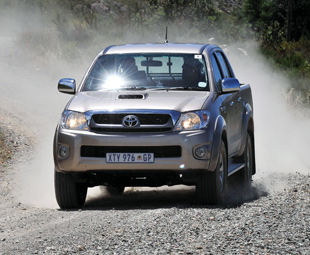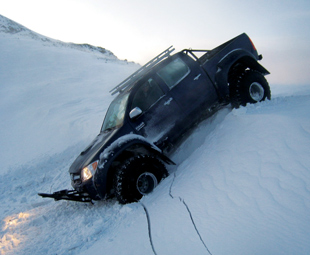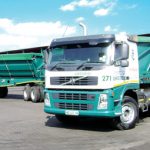Built tough

As the top-selling 1-t bakkie in South Africa since 1970, and the top-selling vehicle overall in 2008, the Toyota Hilux is more than just a bakkie, it’s a national icon, equally at home on the plaas as it is in the centre of Johannesburg.
This year marks the Hilux’s 40th year in South Africa, although many of its most passionate followers would be hard-pressed to believe there was ever a time in local motoring history when the Hilux was not a firm feature.
For a country like South Africa, where sleek urban environments and tough outdoor conditions live side by side, the 1-t bakkie is not only the ideal vehicle for work, home and play, but the epitome of local industry and culture, as well as the first of its kind to reach South African shores.
“The Hilux has always been the forerunner of its class,” agrees Ferdi de Vos, general manager: corporate PR, Toyota SA. “Before South Africa even fully realised how much it needed a 1-t bakkie, the Hilux was here.”
And the firsts have kept coming, from being the first vehicle in its class to offer ABS brakes and airbags, to the first bakkie to offer a double-cab model, bringing the Hilux into a new market segment, from commercial workhorse to business and leisure vehicle.
“The Hilux has retained its popularity all these years because it really is the complete package,” says De Vos. “It is the workhorse of the country, consistently delivering on all our promises of tough, no-nonsense quality and durability, yet safe and luxurious at the same time.”
According to De Vos, Hilux has maintained its top-selling status over the past 40 years in every year other than 1978, 1997 and 1998, because it has evolved with its customer base and their needs.
“We have listened to what Hil ux drivers need from their bakkies,” he elaborates. “Their specific requirements and operating conditions have played a huge role in the changes we have made with each new model, ensuring they receive maximum quality, reliability and durability from their vehicles.”
ux drivers need from their bakkies,” he elaborates. “Their specific requirements and operating conditions have played a huge role in the changes we have made with each new model, ensuring they receive maximum quality, reliability and durability from their vehicles.”
The fact that the Hilux is built locally also plays a large role in the attractiveness of the vehicle. “From a fleet and commercial perspective, built locally means complete parts availability, which in turn means minimal downtime should the vehicle need a service,” he says.
“The long history of Hiluxes in South Africa also means a substantial dealer footprint, with over 200 dealers able to sell, supply parts and service a Hilux. It doesn’t matter where in South Africa you are, you will find a Hilux dealer or someone able to service a Hilux.
“The Hilux is so much a part of the local farming community, for example, we often refer to it as a farmer itself,” he quips. “Although it’s multi-talented too: from farms to mines, construction sites to suburban garages, you’ll be hard-pressed not to spot a Hilux.”
A substantial dealer network, strong parts support and a reputation for toughness against all odds, including standing the test of time, make the Hilux an excellent investment too – with a good resale value when looking to upgrade to the new Hilux.
The Hilux has also scored consistently well in local customer satisfaction indexes, as evidenced by its fourth consecutive nomination for Best Light Commercial Vehicle in the annual FOCUS on Excellence Awards. The only question that remains is whether this will be its fourth consecutive win as well.
Published by
Focus on Transport
focusmagsa




